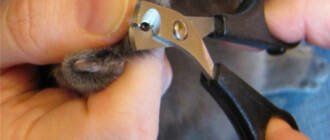Oxygen deficiency leads to impaired function of the cardiovascular system, negatively affects the immune structures. The animal rapidly loses weight, becomes lethargic. The weakened body is a target for infectious and noncontagious diseases.
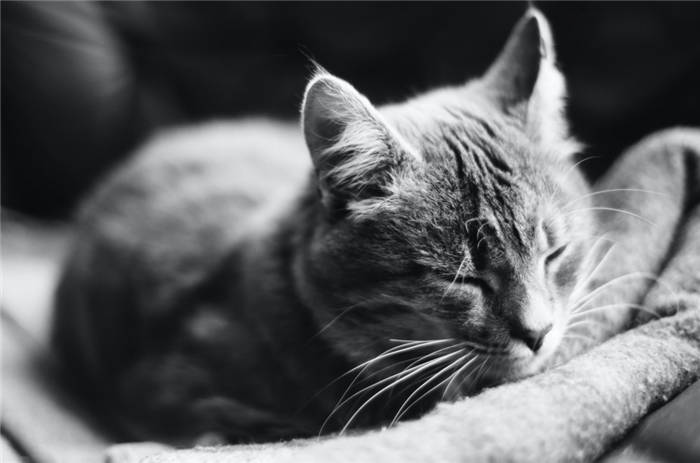
- Anemia in kittens
- Causes
- Causes of the disease
- Types of anemia in cats
- Classification of anemia in cats
- The main causes of the development of the pathological condition are
- Prognosis
- Treatment
- What to give from the drugs?
- Blood transfusion
- At home
- Folk methods
- What to feed a cat?
- Anemia in cats
- What types of anemias are there?
- Etiological factors
- How anemia in cats is treated
- Veterinary care
- Diet during treatment
- Danger of the condition and its consequences
- Causes and routes of infection
- Symptoms of infection
- What to feed your pet
- Prognosis for cats with anemia
Anemia in kittens
In this article, we will talk about kitten anemia. So, let's start with the general concept of what anemia is. Anemia in animals is defined as a decrease in the mass of red blood cells. In practical use, it can be called a decrease in cell volume or hematocrit, hemoglobin concentration or number of erythrocytes below the reference limits for the species. When interpreting laboratory tests it is important to remember, in different situations these values may be below the norm and not an abnormality (e.g. young age, pregnancy).
The main clinical manifestations are pallor or iktericity of the mucous membranes, lethargy, intolerance of exertion, perverse appetite, and decreased general activity. These clinical signs may be acute or chronic and vary in severity. The duration of the clinical signs may not reflect the mechanism of the anemia. For example, "acute" clinical signs are common in cats with chronic anemia; most cats with chronic anemia are compensated by shifting the oxygen hemoglobin dissociation curve to the right, so oxygen is released more easily into the tissue. Thus, cats are clinically stable as long as their hematocrit remains below a certain percentage, and then "acute" signs develop.
Causes
Very often in kittens, the cause of anemia is ecto- and endoparasites. Also anemia can be triggered by viral infections (panleukopenia, feline viral leukemia, viral peritonitis, viral immunodeficiency), injuries, internal and external. Hemobartonellosis (infectious feline anemia) can cause a decrease in red blood cells. Drug intoxication, food (mushrooms), vitamin B and iron deficiencies are all causes of anemia.
Treatment is prescribed based on what is causing the anemia. For parasitic infestations (helminths, fleas) it is sufficient to treat the animals with drugs, treat the room where the animal is kept (with flea dermatitis). If the cause is poisoning by drugs or food is prescribed intravenous infusion therapy, gastric lavage. In this case it is very important to monitor the condition of the animal, so these patients are placed in an intensive care unit, control their condition, monitor biochemical and clinical blood tests (including red cell counts). If the anemia is due to a viral infection, an infectious therapy is prescribed, often such kittens are placed in an infectious disease ward, and intravenous infusion therapy may be given (as appropriate). It is important to know that not all infections that cause anemia are treated, some are only maintained on certain medications. For hemobartonellosis, long-term antibiotic therapy is prescribed. With blood loss and trauma, of course, the source of the blood loss is eliminated. It is important to know that in many of the above conditions animals are carried out hemotransfusion (transfusion of whole blood or red blood cell mass), as well as prescribed drugs that stimulate hematopoiesis.
Anemia can be a symptom of various diseases, some of which can be combined with each other (e.g., trauma and viral infection). It is important to take the animal to a specialist in time for him to assess the condition and diagnose it.
Causes of the disease
Anemia in cats can be caused by different groups of factors: related to blood loss, causing the breakdown of red blood cells, reducing the production of red blood cells. Some of the most common causes include:
- Trauma leading to internal bleeding;;
- neoplasms of various kinds;
- diseases caused by external and internal parasites;
- autoimmune diseases;
- poisoning by toxic substances;
- chronic diseases of internal organs;
- leukemia;
- feline immunodeficiency.
An unbalanced and nutrient-poor diet is also a cause of anemia in cats.
Types of anemia in cats
There are several classifications of anemia in cats. Thus, depending on the rate of red blood cell recovery, non-regenerative and regenerative anemia are distinguished. In the first case, bone marrow fails to cope with its task of producing red blood cells – it does not have time to restore their normal number. This may be due to diseases of the bone marrow or a very high rate of cell decay. In the second case, the balance is restored within a certain time.
- Post-hemorrhagic – develops due to acute or chronic blood loss;
- hypoplastic – the result of abnormal function of the hematopoietic organs (insufficient production of new erythrocytes);
- aplastic – a sharp decrease in the content of blood cells, including red blood cells;
- iron deficiency – a type of nutritional anemia (alimentary), characterized by iron deficiency due to its insufficient intake from food or poor absorption;
- infectious – destruction of red blood cells occurs as a result of pathogenic microorganisms;
- hemolytic – simultaneously increased destruction and formation of red blood cells with the predominance of the former;
- Renal – develops against the background of CKD (chronic renal failure).
Due to the large number of causes of anemia, only a veterinarian can determine how to treat the pathology after a preliminary examination of the animal.
Classification of anemia in cats
- According to the way of self-regeneration and the level of bone marrow work are:
- non-regenerative, when more red blood cells are destroyed than the body can produce in return, i.e. there is no compensation, the condition deteriorates rapidly;
- regenerative, when there is intensive production of red blood cells to replace those destroyed, the bone marrow does its best to compensate for the condition.
- Post-hemorrhagic form develops against the background of massive blood loss, when the volume of circulating blood in the body sharply decreases. It can be acute (against the background of immediate massive bleeding) and chronic (with small bleedings, but for a long time). The acute form is more dangerous because of the inability to quickly replenish the volume of circulating blood.
- Infectious anemia occurs when viruses or bacteria that have hemolytic (erythrocyte-destroying) properties enter the body. The most commonly reported viruses are leukemia, bartonellosis, immunodeficiency disease, and panleukopenia. Bacteria are salmonellae, staphylo- and streptococci.
- Hemolytic anemia in cats is almost always accompanied by jaundice due to failures in the hematopoietic system (congenital pathology) or lesion of the body by highly toxic poisons or blood parasites (acquired condition). The liver has no time to remove the destroyed red blood cells, and decay products accumulate in the blood.
- Alimentary form is associated with metabolic disorders, when the body does not absorb iron and essential vitamins, or with malnutrition, when the necessary minerals and vitamins are not supplied to the body. It most often occurs against a background of gastrointestinal problems. Usually this type of iron deficiency anemia in cats develops.
- Aplastic anemia is accompanied not only by a decrease in the number of erythrocytes and hemoglobin, but also other blood cells.
- Hypoplastic pathology develops against the background of a malfunction of the organs of hematopoiesis, when at the normal period of destruction of old red blood cells an insufficient number of new cells is produced. In cats, this form occurs quite often due to the peculiarities of the life span of red blood cells.
The main causes of the development of the pathological condition are
- Extensive bleeding (internal or external), leading to loss of total blood volume;
- anemia in chronic infections (renal failure – anemia in a cat with hpn);
- conditions accompanied by hemolysis (destruction) of red blood cells – often in severe poisoning with toxic substances, heavy metals, etc;
- Unbalanced diet, metabolic or gastrointestinal disorders, when the body receives insufficient amounts of B vitamins and iron;
- endocrine disorders;
- parasitic infestations (helminths, blood-sucking insects, protozoa (pyroplasmosis))
- viral anemias with lesions of organs and hematopoiesis (leukemia, viral (infectious) peritonitis of cats, panleukopenia);
- autoimmune hemolytic abnormalities (e.g. neonatal isoerythrolysis – a condition occurring in young kittens when they have different blood groups with their mother – in this background, when fed with breast milk, maternal antibodies entering the body of babies begin to attack and destroy their red blood cells);
- hemobartonellosis – a specific infectious anemia of cats, provoked by mycoplasma Haemofelis;
- intoxication with certain medications or foods (paracetamol, garlic, onions);
- breed predisposition to erythrocyte destruction by any internal or infectious pathology (Abyssinian, Somali cats suffer from congenital erythrocyte instability);
- Oncology (advanced malignant tumors produce toxins that hemolyticize blood cells).
If any several symptoms of anemia are manifested, it is mandatory to take a blood test. What a specialist will see from the readings:
- normochromic (color index is approximately within 1, hemoglobin is normal, erythrocytes are low);
- hyperchromic (a sharp upward jump in hemoglobin, red blood cells are low, and many immature cells or reticulocytes – this form is virtually unrecorded in cats);
- hypochromic (color index below 1, low level of both hemoglobin and erythrocytes, with the drop in hemoglobin being more pronounced). This includes all iron deficiency anemias.
Prognosis
The life expectancy of the cat depends on the cause that caused the anemia, the disease is treated with modern drugs. The veterinarian does not give an accurate prognosis if the pet is found to have anemia caused by the effects of poisons, autoimmune processes, viral infections.
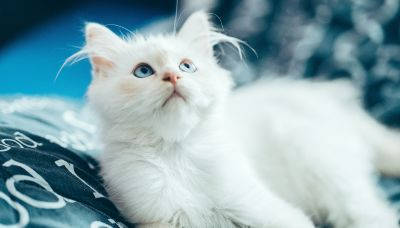
An unfavorable prognosis is set for a pet suffering from cancer accompanied by chlorosis.
If massive bleeding develops, the cat's life depends on timely medical care. In an animal with cachexia the prognosis is unfavorable due to possible formation of multiple organ failure.
Treatment
What to give from the drugs?
Therapy of anemia is complex, includes the use of iron-containing drugs, antiviral, antibacterial agents.
Surgical intervention in anemia is carried out in the case of the development of bleeding.
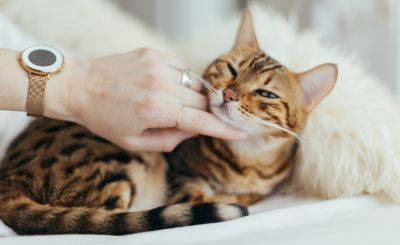
Blood transfusion
Hemotransfusion is necessary in the case of the development of a systemic disease accompanied by anemia – donor blood stabilizes the composition of the liquid medium in the pet's body. Transfusion is carried out under the supervision of a doctor.
At home
If the pet is diagnosed with anemia, the doctor prescribes a treatment that can be carried out at home. The recommended drugs should be given regularly, having studied the regimen of administration. The pet is offered food Renal, a sufficient amount of fluids. If necessary, the owner can put the pet on a drip with saline solution.
Folk methods
To treat anemia use decoctions of the following plants: the herb St. John's wort, sea buckthorn leaves, chamomile flowers. The healing liquid is added to drinking water to stimulate hematopoiesis. In the cat's diet introduce raw grated carrots, increase the level of hemoglobin helps infusion of cotton candy three-leaf.

What to feed a cat?
When chlorosis is prescribed nutritional supplements with an increased content of iron and vitamins B1, B6, B12.
Anemia in cats
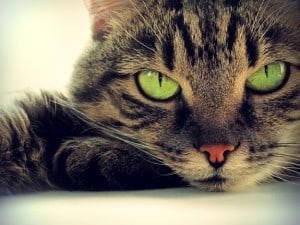
Anemia in cats – A pathological condition characterized by a decrease in the number of circulating red blood cells (red blood cells), hemoglobin, or both. Anemia is not a disease per se, but a consequence of other pathological processes or diseases.
Contents
Relationship of anemia to a lack of oxygen in the tissues
Hemoglobin, contained in red blood cells, supplies oxygen to cells and tissues throughout the body and the symptoms characteristic of anemia are caused by a lack of oxygen. Red blood cells, or red blood cells, are produced in the bone marrow and are released into the bloodstream, where they circulate for about two months. As we age, red blood cells are removed from the bloodstream and their components are recycled. The number of red blood cells may decrease due to decreased production or increased loss of red blood cells.
Types of anemias
- Posthemorrhagic anemia – Is associated with bleeding of various etiologies. It may be caused by: trauma or damage to blood vessels or internal organs; severe parasitic infestations (e.g., fleas, mites, hookworms, etc.), intestinal, kidney, bladder tumors; diseases that can impair blood clotting as well as poisoning with anticoagulants.
- Hemolytic anemia – is caused by the destruction and decay of red blood cells. Causes can be autoimmune hemolytic anemia, feline leukemia virus, blood parasitic infestations (e.g., hemobartonellosis), chemicals or toxins, neoplasia (cancer).
- Non-regenerative anemia. Caused by bone marrow suppression, which can be caused by any severe or chronic disease, a very poor or severely unbalanced diet, autoimmune anemia, feline leukemia virus, chemicals or toxins, neoplasia (cancer). This type of anemia can develop in chronic renal failure, due to impaired endocrine function in the kidneys and, consequently, reduced production of erythropoietin.
What types of anemias are there?
Anemia in cats is differentiated according to the type of processes occurring in the body and the rate of recovery of the number of red blood cells. If the bone marrow fails to produce the required number of young red blood cells or the old ones decay faster than the norm, the anemia is non-regenerative. In regenerative anemia, the body manages to strike a balance between loss and production of red blood cells.
Classification of anemia by cause:
- Posthemorrhagic or due to extensive blood loss. The acute form is critical for the cats' lives, as blood transfusions do not always help save lives;
- hypoplastic, appears as a consequence of a malfunction of the hematopoietic organs, when old red blood cells die "as planned" and few new ones are formed;
- infectious, red blood cells die when exposed to pathogens that have hemolytic (destructive) properties (leukemia, panleukopenia, feline AIDS, streptococci, etc.)
- aplastic, there is a decrease in red blood cells and other blood cells;
- hemolytic, caused by a congenital malfunction in the blood-forming organs or exposure to poisons or blood parasites. It is accompanied by jaundice, since the liver does not have time to eliminate dead blood cells from the body;
- alimentary (nutritional), develops in response to a lack of nutrients, metabolic disorders, especially with poor absorption of iron and vitamins (iron deficiency anemia in cats).
Etiological factors
The death of red blood cells, and the resulting anemia, may be due to the following causes:
- Extensive bleeding;
- Infections (more often chronic);
- Poisonings (hemolysis of red blood cells);
- Gastrointestinal abnormalities and failure to absorb vitamins and micronutrients;
- endocrine dysfunctions;
- autoimmune infections, parasitic and viral pathogens;
- Breed predisposition (Abyssinian, Somali).
Oncology, improper giving of drugs that cause hemolysis (destruction) of red blood cells. These and other etiologic factors are always considered in the examination, prescription, and prognosis of the animal's life.
How anemia in cats is treated
Treatment of anemia in cats is aimed at eliminating the cause that caused it. In most cases, the prognosis is favorable. The only exception is diseases affecting the bone marrow.
Veterinary care
After diagnosis, the veterinarian decides how to treat anemia in the cat, choosing a conservative or surgical method. The second option is resorted to for internal injuries and impaired bone marrow functionality. In all other cases, the following drugs are used:
- Infusion solutions that stimulate the elimination of toxins;
- antiviral and antibiotics to kill the infectious agent;
- anthelmintics and other antiparasitic agents;
- Blood thinners and coagulants that increase blood clotting;
- Glucocorticosteroids that reduce inflammatory reactions;
- hepatoprotectors, which restore liver cells, and drugs to normalize kidney function;
- immunosuppressants that suppress immunity in autoimmune pathologies;
- vitamins and immunomodulators that improve the body's defenses.
Iron-containing drugs are prescribed only after the source of the disease has been eliminated. Otherwise, they only aggravate the situation, creating favorable conditions for the feeding of pathogenic microorganisms.
In addition to taking medications, it is important to take care of reviewing the available diet to eliminate existing deficiencies. To understand the effectiveness of therapy, regular tests will be required to monitor changes over time.
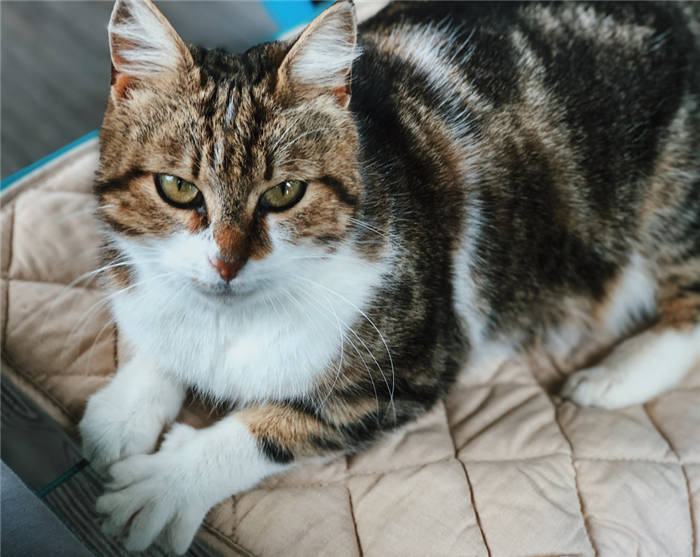
Diet during treatment
Foods enriched with iron should be added to the diet to raise hemoglobin. These include:
To stimulate intestinal peristalsis, cottage cheese, sour milk and other low-fat dairy products are recommended. Of the vegetables, zucchini, bell peppers, and pumpkin will do.
Danger of the condition and its consequences
Due to the weakening of the immune system, anemia is often complicated by secondary infections and exacerbates chronic diseases. Kittens born of a sick mother fall behind in development or die inside the womb. But the greatest danger lies in the imminent death from hypoxia or massive failure of internal organs.
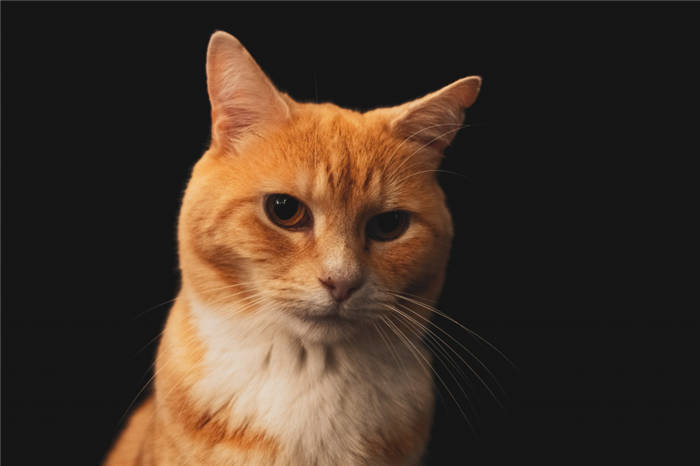
Causes and routes of infection
The disease is transmitted through the blood of cats infected with hemobartonellosis. It occurs by:
Another possible route of transmission is transplacental. The asymptomatic form of the disease sharply turns into an active phase during pregnancy. The mother's bacteria are transmitted through the placenta to the kittens, causing their death.

The risk group includes males younger than 3 years, carrying the pathology in the acute form. In cats, chronic hemobartonellosis is more common, exacerbated by the following causes:
Animals that have had the disease in the acute form continue to be carriers even after recovery. In spite of this, the possibility of transmission at this stage has not been proven.
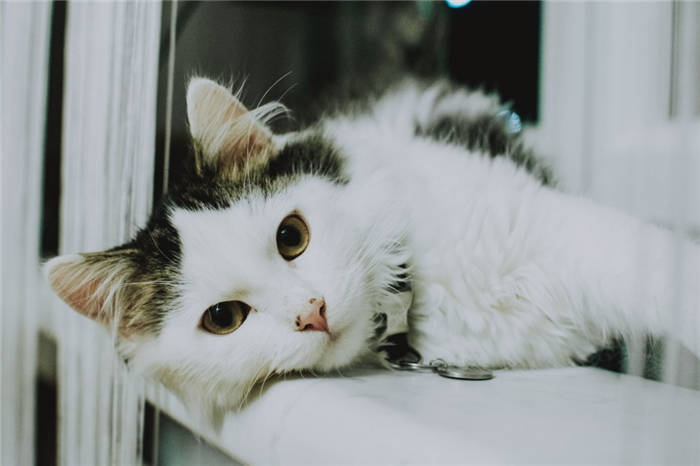
Symptoms of infection
The first symptoms appear on days 8-17 of infection. Increasing weakness associated with a drop in hemoglobin levels is accompanied by apathy, rapid fatigue, increased duration of sleep and decreased appetite. In addition to behavioral changes, other changes are added over time, including:
- Pallor of the tongue and gums;
- Shortness of breath (the cat breathes only with its mouth open);
- An increase in pulse rate above 180 beats per minute;
- yellowing of the mucous membranes and skin, and darkening of the urine associated with the accumulation of hemoglobin in the liver;
- Enlargement of lymph nodes;
- dry skin and deterioration of coat quality (focal alopecia and unkempt appearance).
Fever is rare and is not a specific sign of IAC. Its appearance is caused by an acute course, secondary infection or an inflammatory process (inflammation of the testicles in males). In all of these cases, the body is severely intoxicated and requires immediate veterinary care.
The brightness of symptoms depends on the strength of the immune system and the course of the disease. The least pronounced symptoms are characteristic of the chronic form, and the most vivid – of the acute form. In the latter case, the rapid destruction of red blood cells leads to severe cardiovascular failure, followed by loss of consciousness.
Fatal outcome can occur within a few hours after the appearance of the first alarming signs and symptoms, so the treatment of hemobartonellosis in cats is better not to delay.
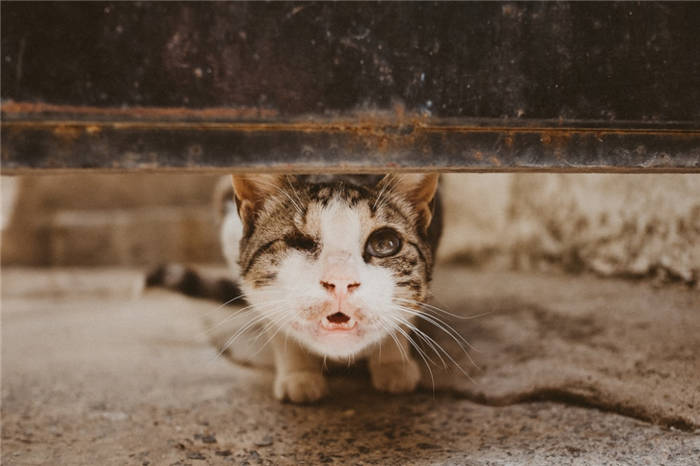
What to feed your pet
With blood diseases, in addition to competent treatment, the diet of the sick animal is of no small importance. In the diet should be present full-value proteins. To this end, a sick cat's diet should include lean beef, turkey, chicken. Twice a week it is useful to give by-products. A mandatory component of the diet should be vegetables rich in iron, copper, cobalt and vitamins. Dairy products are recommended for proper intestinal function.
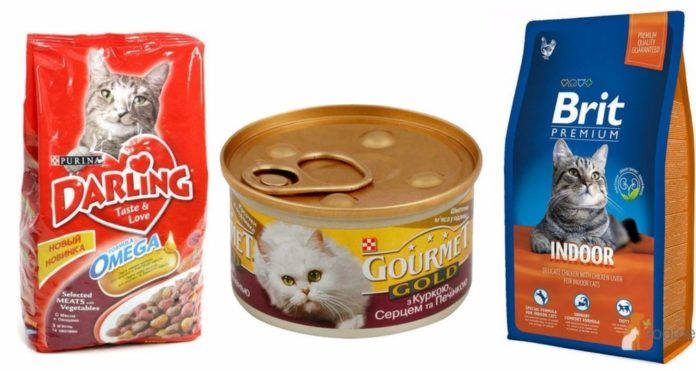
Prognosis for cats with anemia
The acute form of pathology in the case of profuse blood loss is cautious. The outcome depends on timely professional assistance. With competent diagnosis and adequate treatment of most forms of anemia, the prognosis for the pet is favorable. If anemia is a symptom of a cancerous tumor or autoimmune disease, the prognosis is cautious and depends on the severity of the underlying disease.
Veterinary specialists give the owners of furry pets the following recommendations for the prevention of pathology:
- balance the diet in terms of protein, energy, minerals (iron, copper), vitamins;
- prevention of helminth infections, flea infestation;
- Prevention of injuries, wounds;
- routine vaccinations;
- preventive examination of the pet by a veterinary specialist with mandatory blood tests.
Anemia in domestic cats is a common blood disease and is more often seen as a symptom of an underlying disease. The complex classification is due to the variety of causes of the ailment. Diagnosis is based on clinical blood tests, accompanying tests and examinations. Timely treatment gives a favorable prognosis for most forms of anemia.





